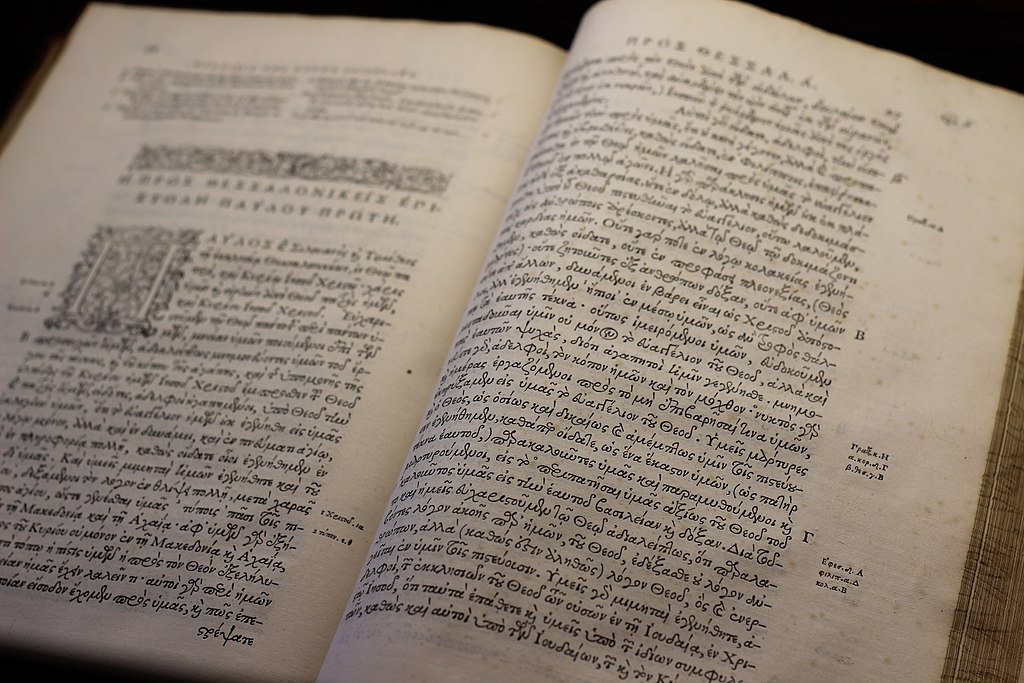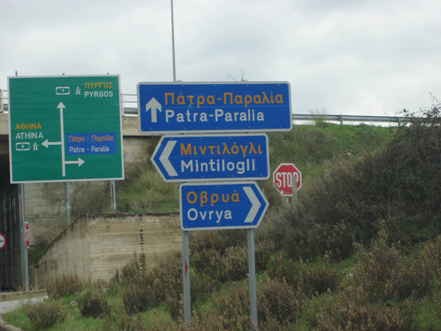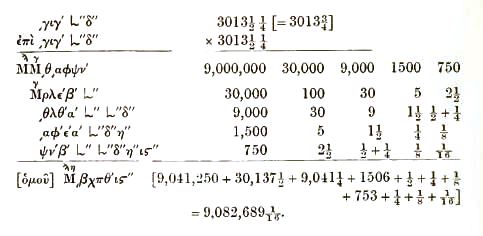The Greek alphabet is a central part of Greece’s cultural heritage. Like the language, the alphabet has ancient origins and is among the oldest in the world still in use.
Many letters look identical to our Latin ones, others remind us of them, while there are still other letters that at first glance look completely unfamiliar. It is perhaps this diverse mix of letters that has given rise to the term It’s all Greek to me.

The Greek alphabet has also historically played an important role in philosophy, science and art. Letters such as Α (Alpha), Β (Beta), Δ (Delta), Π (Pi) and Σ (Sigma) have been fundamental in mathematics and other sciences. Learning the Greek alphabet and its background provides a deeper understanding of the history and culture of Greece and its impact on today’s societies. By exploring this alphabet, we open the door to new ideas and insights into how our civilization was shaped.
Moreover, if you wish to learn to speak Greek, you will hear from those who already studied the language that the first step is to master the Greek alphabet.
Getting started with the Greek language
- Are you learning how to read and write the Greek alphabet? Then look no further: Greek Alphabet Workbook for Beginners >>
- Learn to Read Greek in 5 Days – it does not have to be difficult! Check this system out >>
- Complete Greek – teach yourself with this comprehensive approach >>
- For absolute beginners in the Greek language, the basics >>
Please note: booking through affiliate links in our texts means absolutely no extra cost to you. However, it is a way to support the work of the expedition, so that we can continue to offer first-class content and exciting digital adventures. More about affiliate links in our privacy policy.
The 24 letters
The modern Greek alphabet used today consists of 24 letters and has undergone many changes throughout history. In fact, the older alphabet had several letters that are no longer used in the modern written language. The 24 current letters are divided into 7 vowels and 17 consonants. The vowels are α (alpha), ε (epsilon), η (eta), ι (iota), ο (omicron), υ (ypsilon) and ω (omega). These are combined with different consonants to write the words of the Greek language.
| Letter | Name | Pronunciation (according to IPA) | Approx. European equivalent |
| A α | alpha | [a] | a as in English father, but short |
| Β β | beta | [v] | b |
| Γ γ | gamma | [ɣ] or [ʝ] | g as in Spanish lago; y as in English yellow; |
| Δ δ | delta | [ð] | th as in English then |
| Ε ε | epsilon | [e] | e |
| Ζ ζ | zeta | [z] | z as in English zoo |
| Η η | ita | [i] | i as in English machine, but short |
| Θ θ | theta | [θ] | th as in English thin |
| Ι ι | jota | [i] [j] | i as in English machine, but short |
| Κ κ | kapa | [k] | k as in English make |
| Λ λ | lamda | [l] | l as in English lantern |
| Μ μ | mi | [m] | m as in English music |
| Ν ν | ni | [n] | n as in English net |
| Ξ ξ | ksi | [ks] | x as in English fox |
| Ο ο | omikron | [o] | o as in English box |
| Π π | pi | [p] | p as in English top |
| Ρ ρ | ro | [r] | r as in English thrilled |
| Σ σ (ς) | sigma | [s] , written as ς if it is at the end of a word | s as in English soft |
| Τ τ | taf | [t] | t as in English coat |
| Υ υ | ypsilon | [i] | i |
| Φ φ | fi | [f] | f as in English five |
| Χ χ | chi | [x] ~ [ç] | h as in English hue |
| Ψ ψ | psi | [ps] | ps as in English lapse |
| Ω ω | omega | [o] | o similar to British English call |
Vowels, consonants, digraphs and diphthongs
In addition to individual letters, the Greek writing system also includes digraphs, which are combinations of two letters that represent a specific sound or phonetic feature. Also diphthongs are used in the Greek language. Diphthongs are mainly combinations of two vowels that form a single sound.
In simple terms, one can say that the Greek alphabet is thus a combination of vowels, consonants, digraphs and diphthongs that together form the written representation of the language. These elements are used to create words, expressions and sentences; they are the building blocks of the modern written Greek language.
For your upcoming trip to Greece – 2024
- Popular things to do: tours, cruises and trips >>
- Top attractions to visit >>
- Explore and discover Greece >>
- Greece travel forum in TripAdvisor >>
Please note: booking through affiliate links in our texts means absolutely no extra cost to you. However, it is a way to support the work of the expedition, so that we can continue to offer first-class content and exciting digital adventures. More about affiliate links in our privacy policy.
Examples of how to say …
| Greek | Pronunciation | English |
|---|---|---|
| Ελλάδα | Elláda* | Greece |
| Αμερική | Amerikí | America |
| Καλημέρα | Kaliméra | Good morning |
| Γειά σου | Geiá sou | Hi, Hello |
| Ένα | Éna | One |
| Εκατό | Ekató | Hundred |
| Γειά μας | Yá mas | Cheers |
Related video – Guess Greek Gestures
Historical development of the alphabet
The Greek alphabet shows a fascinating historical development. Already in ancient times there were numerous myths and theories about its origin. The dramatist Aeschylus claimed that the titan Prometheus was the first to give humans the letters. The tragedian Euripides, on the other hand, believed that the mythological hero Palamedes invented the alphabet, or at least parts of it. Other thinkers believed that the three goddesses of fate – the Moirae – created the first letters. There were also some who honored the god Hermes for this gift to humanity.
Linear B – the first Greek written language
As discussed in previous posts, it is now generally accepted that the oldest Greek written language was Linear B, which was in use during the Mycenaean period from 1400 BC to 1200 BC. However, the alphabet, as we know it today, is believed to have evolved from ancient Phoenician, although there are theories claiming that several language families may have influenced its development, according to the polygenesis theory.
Separating vowels and consonants
The Greek alphabet was an adaptation and modification of the Phoenician alphabet. The Greeks removed consonants that did not have equivalents in their language and used them instead to denote vowel sounds. Thus they created the first writing system with separate symbols for vowels and consonants, allowing an unambiguous representation of speech. This was a significant advantage over other contemporary writing systems that could be ambiguous. In addition, the Greek alphabet now had a lower number of characters, which made the writing system more accessible to those who wanted to learn to write and could no longer be monopolized only by specialists, the scholars.
Upper and lower case letters
In ancient times, the classical alphabet consisted only of uppercase letters, meaning that all letters were written in capitals. We recognize this form of the alphabet from monumental texts, such as inscriptions on statues, vases, buildings and public places.
It was not until the early Middle Ages, more specifically in the 9th and 10th centuries, that the lower case letters were fully established in the Greek writing system. The introduction of lower case letters allowed for greater variety and flexibility and enabled the use of different fonts and levels of style.
Accents
Greek language development is also characterized by the various systems of accent markings, used throughout the centuries, to facilitate linguistic pronunciation.
As early as the Hellenistic period, around 200 BC, people began experimenting with using a variety of diacritical marks, such as accents and breathing signs, to mark particular stresses and pronunciation variations. This was later systematized and became the so-called Greek polytonic system, where letters could carry several different accent marks and have varying pitches. The polytonic alphabet was in use for a very long time, almost two millennia. However, it was replaced in the 1980s by the monotonic writing system.
The monotonic system assigns letters only one accent – called a tone – which indicates that that particular letter should be emphasized in the word. This adjustment greatly simplified the written language and facilitated the use of the Greek alphabet in modern technologies and digital platforms. Those changes in the formation and the accentuation of the Greek alphabet reflect the continuous evolution of the language throughout history and its adaptation to different written and verbal needs.

Learn how to count with Greek numbers
In its original form, the Greek alphabet was probably used mainly to denote numbers and figures. In Greece, the Ionian numeral system was once the most widespread, before the Arabic numerals became established. This system is still used today, alongside the now-dominant modern numerals.

The Arabic system, also known as the Hindu-Arabic numeral system, was introduced in Greece in the Middle Ages. This took place in the context of trade relations and cultural exchange between the Arab and Greek worlds. It is important to note that the Arabic system did not replace the Greek numeral system completely and immediately. The transition was gradual and took place over a long period, from around the 9th century until the Renaissance. However, even today in Greece the older system is used, especially for ordinal numbers and in official or ecclesiastical contexts.
| Symbol of number | Meaning | Pronunciation |
|---|---|---|
| Α’ | one, first | ena, proto |
| Β’ | two, second | dyo, deftero |
| Γ’ | three, third | tria, trito |
| Δ’ | four, fourth | tessera, tetarto |
| Ε’ | five, fifth | pende, pempto |
| Στ’ | six, sixth | exi, ekto |
| Ζ’ | seven, seventh | efta, evdomo |
| Η’ | eight, eighth | okto, ogdoo |
| Θ’ | nine, ninth | ennea, enato |
| Ι’ | ten, tenth | deka, dekato |
| ΙΑ’ | eleven, eleventh | endeka, endekato |
| ΙΒ’ | twelve, twelfth | dodeka, doekato |
| ΙΓ’ | thirteen, thirteenth | dekatria, dekatotrito |
Influences and impacts outside Greece
The historical importance of the Greek alphabet extends far beyond the borders of Greece. It has influenced the development of other writing systems, such as the Latin alphabet used in the Western world and the Cyrillic alphabet used in several Slavic languages. This shows the global impact of the Greek alphabet and its extensive spread across continents and cultural environments.
In science, the Greek alphabet has historically played a very significant role. Many mathematical symbols and terms used internationally have their roots in the Greek alphabet. For example, Σ (sigma) is used to denote summation, π (pi) to represent the number pi, and α (alpha) or δ (delta) to denote variables in various scientific disciplines. In astronomy and astrophysics, the Greek alphabet is used to name stars, constellations and other celestial bodies. Many of the most famous stars have Greek letters as prefixes, such as α Centauri (Alpha Centauri), β Orionis (Beta Orionis) and γ Cassiopeiae (Gamma Cassiopeiae).
Combinations of letters of the Greek alphabet are also widely used by international associations, societies and organizations to show common affiliation and strengthen cohesion. The letter combinations serve as identity symbols and can be seen in logos, emblems and naming. Using Greek letters reinforces the link to ancient Greece and its rich cultural heritage. Examples include Lambda Theta Alpha, Alpha Phi Alpha, Phi Beta Kappa.
In English, we have the expression “the Alpha and Omega” which comes directly from the Bible (Revelations 1:8). It refers to God calling himself the beginning and end of all things. So in English, “the Alpha and Omega” can be used to mean the absolute most important part of something.
When it comes to how the Greek alphabet is represented digitally, the Unicode character encoding is used. This means that each character of the written language is assigned a specific code that allows it to be represented on computers and digital devices. This has facilitated the use of the Greek alphabet in the digital world and made it accessible to a wide audience. In total, there are 518 characters in the Unicode standard that are classified as belonging to the Greek written language. Example: Alpha “Α” = (U+0391) and Omega “Ω” (U+03A9).
Letters that have disappeared
The letters of the Greek alphabet were not always twenty-four. During its development over the centuries, some of them fell out of use and were gradually abandoned. Some of these phased-out letters are:
- Digamma (Ϝ ϝ), was the sixth letter in early forms of the Greek alphabet. It was a phoneme, like the English (w)
- Sabi (ϡ) is also an old and now obsolete letter of the Greek alphabet, which was later used solely as a numerical symbol for the number 900. It is believed to represent a phoneme similar to double [ssh] or [tt].
- Stigma (Ϛ ) is a cluster of the characters sigma σ and taf τ still used today in the Greek numbering system as a symbol for the number six (6), Στ’. It was previously used instead of the pair st to write words such as stratos (ϛratos).
Final words
In conclusion, the alphabet is a fundamental part of Greece’s cultural and historical heritage. The Greek alphabet has a significance that extends far beyond its written uses. It is a symbol of Greece’s history and heritage, and has had a significant impact in science, mathematics and other fields. By preserving and using the alphabet, Greece honors its rich history and demonstrates its continued importance in today’s society.
Sources:
